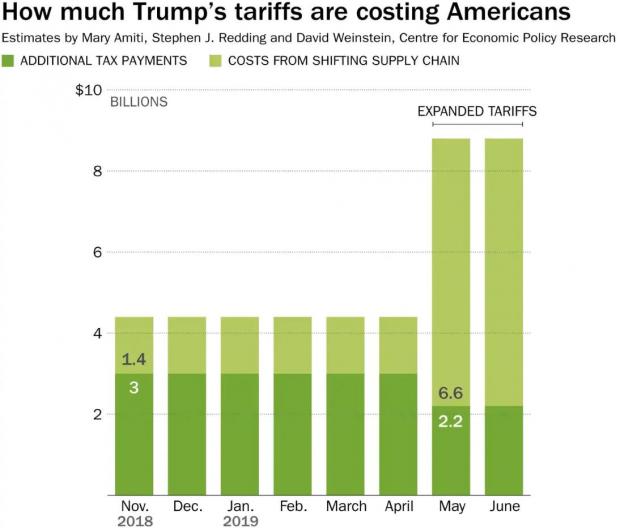As he escalates his trade war with China, President Trump is pushing to provide some additional bailout funds to placate the U.S. farmers being hurt by his tariffs.
“Out of the billions of dollars that we’re taking in [from tariffs], a small portion of that will be going to our farmers,” Trump said Monday. “We’re going to take the highest year — the biggest purchase that China has ever made with our farmers, which is about $15 billion — and do something reciprocal to our farmers.”
The president tweeted a similar pledge on Tuesday: “Hopefully China will do us the honor of continuing to buy our great farm product, the best, but if not your Country will be making up the difference based on a very high China buy,” he wrote. “This money will come from the massive Tariffs being paid to the United States for allowing China, and others, to do business with us.”
The tweet underscores again Trump’s misunderstanding of how tariffs work. They are paid by U.S. importers, and ultimately passed on to U.S. consumers.
The background: The Trump administration last week raised tariffs on $200 billion in Chinese goods and threatened to extend the tariffs to an additional $300 billion in imports. China responded in part by announcing that, as of June 1, it would impose tariffs on $60 billion of U.S. goods.
Farmers feeling the pain: Farmers are feeling the impact of the trade war and, while many still stand by Trump, some are growing weary of his trade policy. "Farmers have been patient and willing to let negotiations play out, but with each passing day, patience is wearing thin," said National Corn Growers Association President Lynn Chrisp in a statement last week, according to CNN. "Agriculture needs certainty, not more tariffs."
Net farm income dropped by $12 billion, or 16%, in 2018. The $15 billion in aid Trump has suggested would be on top of $12 billion he directed the Department of Agriculture to provide last year. That first farm-support program has reportedly paid out more than $8.5 billion thus far, with producers of soybeans, corn, wheat, cotton and sorghum getting much of the money.
The latest bailout is still being devised, Trump said Monday, and it’s not yet clear who would be eligible for the aid. “The question of how this would be done, whether it would apply to wheat and corn and other crops and not just soybeans, is going to be a question that’s going to have to be answered,” Sen. John Thune (R-SD) said, according to The Washington Post.
Perhaps a bigger long-term question for farmers is whether an important market for their products has been destroyed.
Consumers are getting hit too: Here’s one way to look at Trump’s proposed aid to farmers, The Washington Post’s Philip Bump: “Trump is taxing consumers to bolster farmers, a core part of his political base.” One estimate Bump cites puts the additional cost to consumers at $8.8 billion a month. Since November, the total estimated cost is $22.4 billion in tariffs and $21.6 billion in higher costs resulting from related supply-chain changes.
The politics: The new tariffs have drawn criticism and concern from both Democrats and Republicans. “The American worker is getting killed by this," former Vice President Joe Biden, who’s running for the Democratic presidential nomination, said Monday on a New Hampshire radio station. "The American farmers are getting killed.” And the additional bailout being proposed has once again raised cries of Trumpian hypocrisy — that the president is looking to protect his voter base at the expense of the broader public. “During the administration of Barack Obama, Trump and his party regularly excoriated Obama as ‘picking winners and losers,’ shunting government resources to programs that he supported at the expense of the free market,” The Washington Post’s Bump notes.






